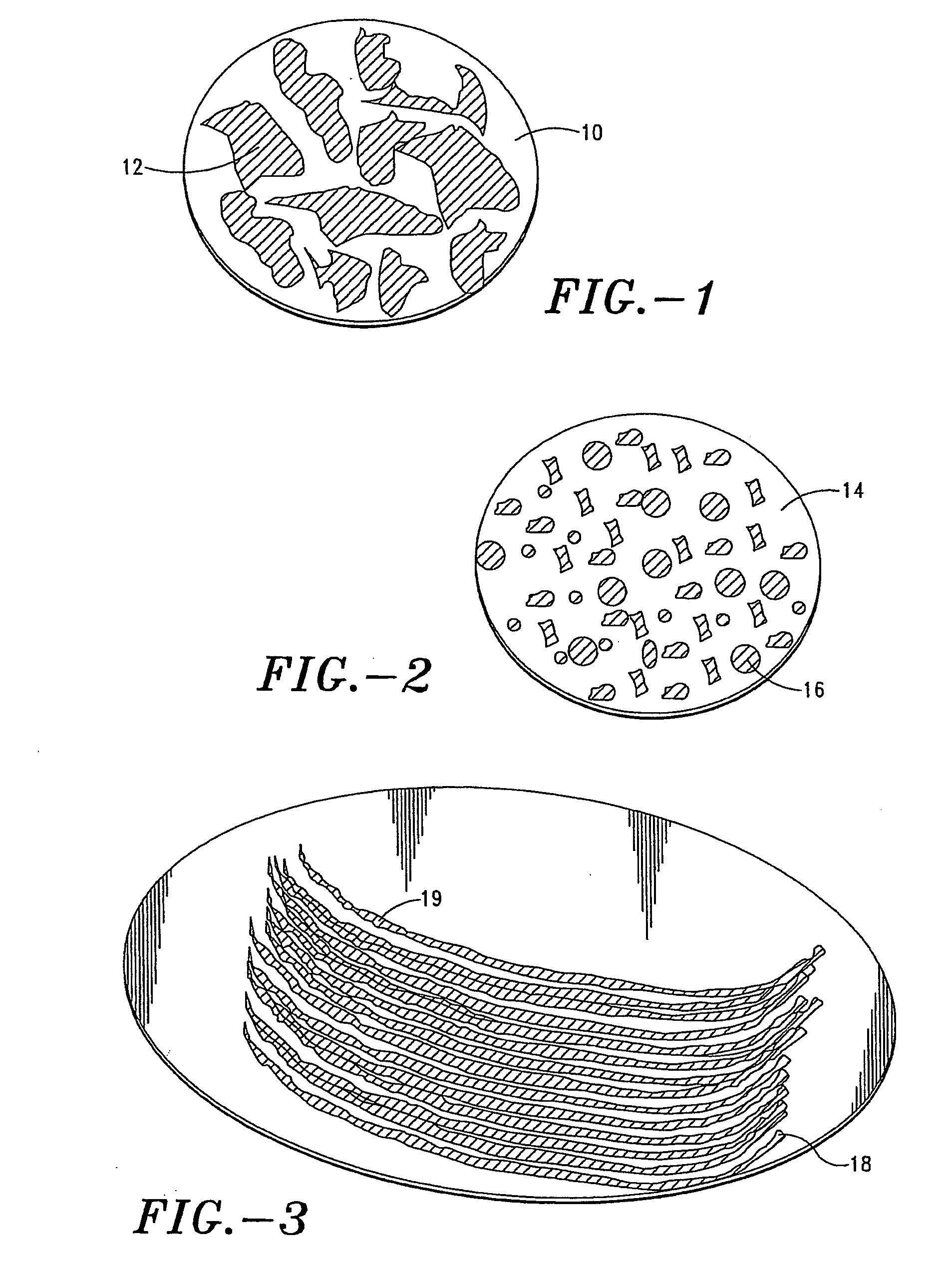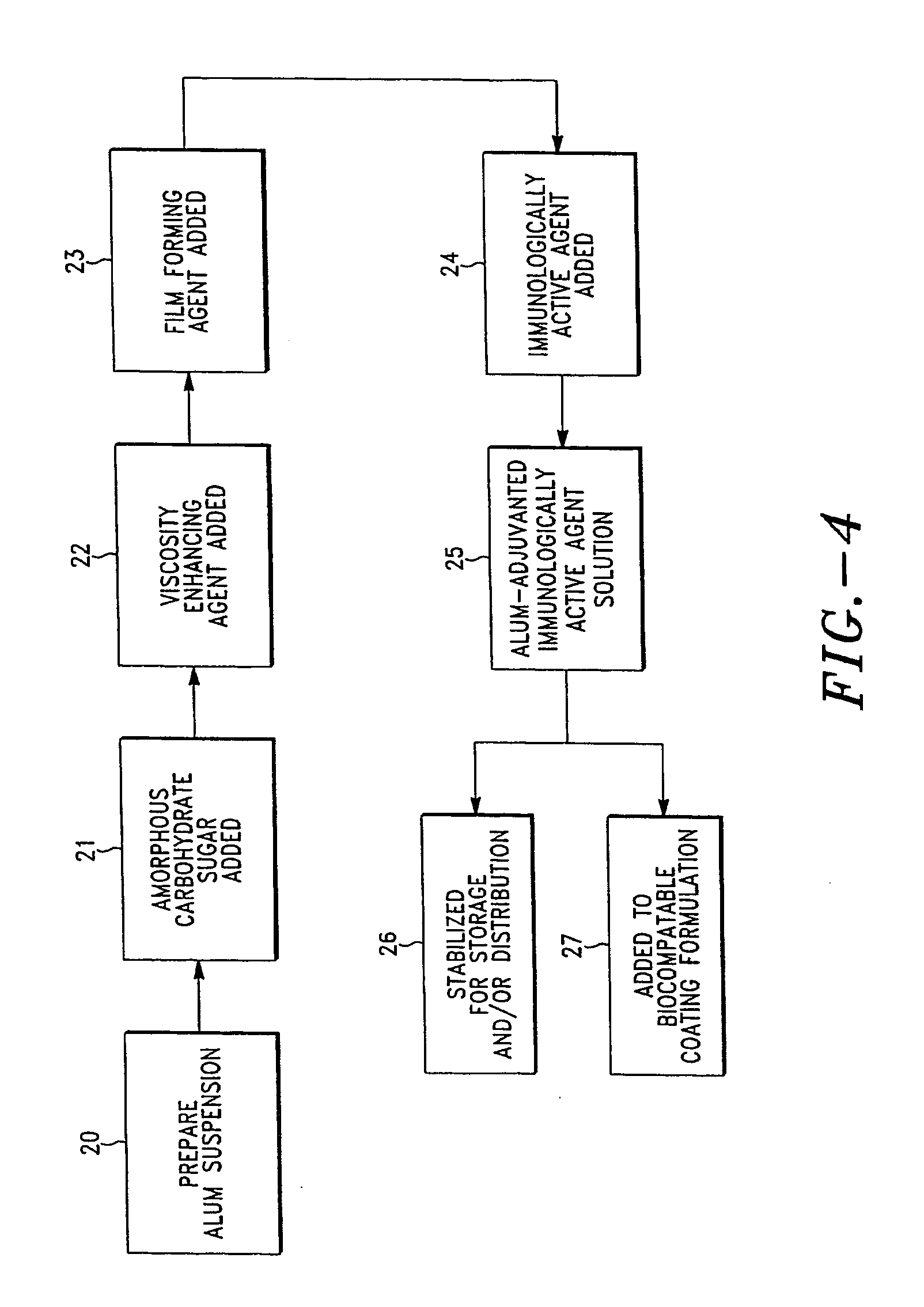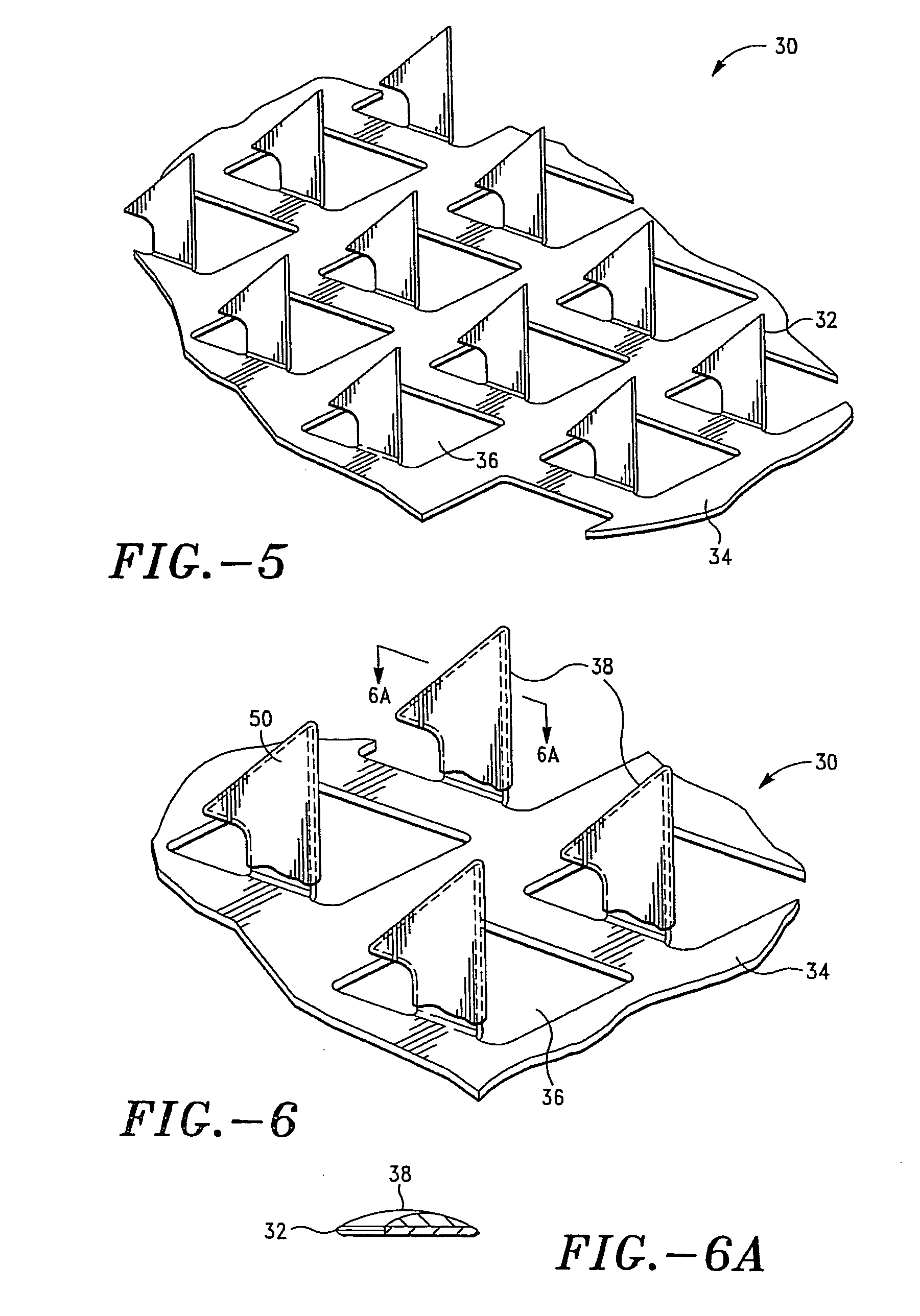Stabilization of alum-adjuvanted immunologically active agents
a technology of immunological active agents and stabilizers, which is applied in the field of compositions of immunologically active agents, can solve the problems of inability to achieve the desired (or required) effect, weak immunogenicity of subunit vaccines alone, and inability to achieve the desired effect, etc., and achieves a high potency level and mitigates or avoids the effect of enhancemen
- Summary
- Abstract
- Description
- Claims
- Application Information
AI Technical Summary
Benefits of technology
Problems solved by technology
Method used
Image
Examples
example 1
[0129] An aluminum hydroxide adsorbed hepatitis B surface antigen (HBsAg) solution was formulated with the composition as summarized in Table 1.
TABLE IIngredientWeight PercentageAL(OH)3 / HBsAg3Amorphous sugar (trehalose)10Viscosity-enhancing agent (dextran of337,000 dalton)
[0130] This liquid formulation was spray dried or spray freeze dried.
[0131] A bench-top spray dryer (Büchi) was used with the following conditions: drying air inlet temperature of 130-140° C., liquid feed of 3.5 mL / min, and drying air outlet temperature of 80-85° C. The resulting powder has a particle size distribution of D10%=1.2 μm, D50%=3.5 μm, and D90%=5.8 μm.
Spray Freeze Drying
[0132] The liquid formulation was sprayed using an ultrasonic atomizer (60 kHz, Sono-Tek Corporation, Milton, N.Y.) at a feed rate of 1.5 mL / min into liquid nitrogen contained in a stainless steel pan. The pan was transferred to a lyophilizer (DuraStop, FTS Systems, Stone Ridge, N.Y.) with pre-chilled shelves at −55° ...
example 2
[0136] An aluminum hydroxide adsorbed hepatitis B surface antigen (HBsAg) solution was formulated with the composition as summarized in Table 2.
TABLE 2IngredientWeight PercentageAL(OH)3 / HBsAg3Amorphous sugar (sucrose)5Viscosity-enhancing agent5(PVP of 50,000 dalton)Surface active agent (polysorbate 20)0.1
[0137] The resulting solution was characterized and it displayed a viscosity of 40 cps and a contact angle of 40° C. on titanium metal. Dip coating was applied to the tip of an array of 225-μm microprojections (725 microprojections per cm2) by submerging the top 100 μm of the microprojection into this solution. After each dip, the liquid uptake was dried for 10 seconds under the ambient air condition (22° C. and 50% relative humidity). The coating process was repeated 10 times until the thickness of the dry coat was approximately 20 μm.
Alum Coagulation Analysis
[0138] The dry coat formulation was reconstituted in water. Optical microscopy was used to measure alum coagulation in ...
PUM
| Property | Measurement | Unit |
|---|---|---|
| Length | aaaaa | aaaaa |
| Fraction | aaaaa | aaaaa |
| Percent by mass | aaaaa | aaaaa |
Abstract
Description
Claims
Application Information
 Login to View More
Login to View More - R&D
- Intellectual Property
- Life Sciences
- Materials
- Tech Scout
- Unparalleled Data Quality
- Higher Quality Content
- 60% Fewer Hallucinations
Browse by: Latest US Patents, China's latest patents, Technical Efficacy Thesaurus, Application Domain, Technology Topic, Popular Technical Reports.
© 2025 PatSnap. All rights reserved.Legal|Privacy policy|Modern Slavery Act Transparency Statement|Sitemap|About US| Contact US: help@patsnap.com



